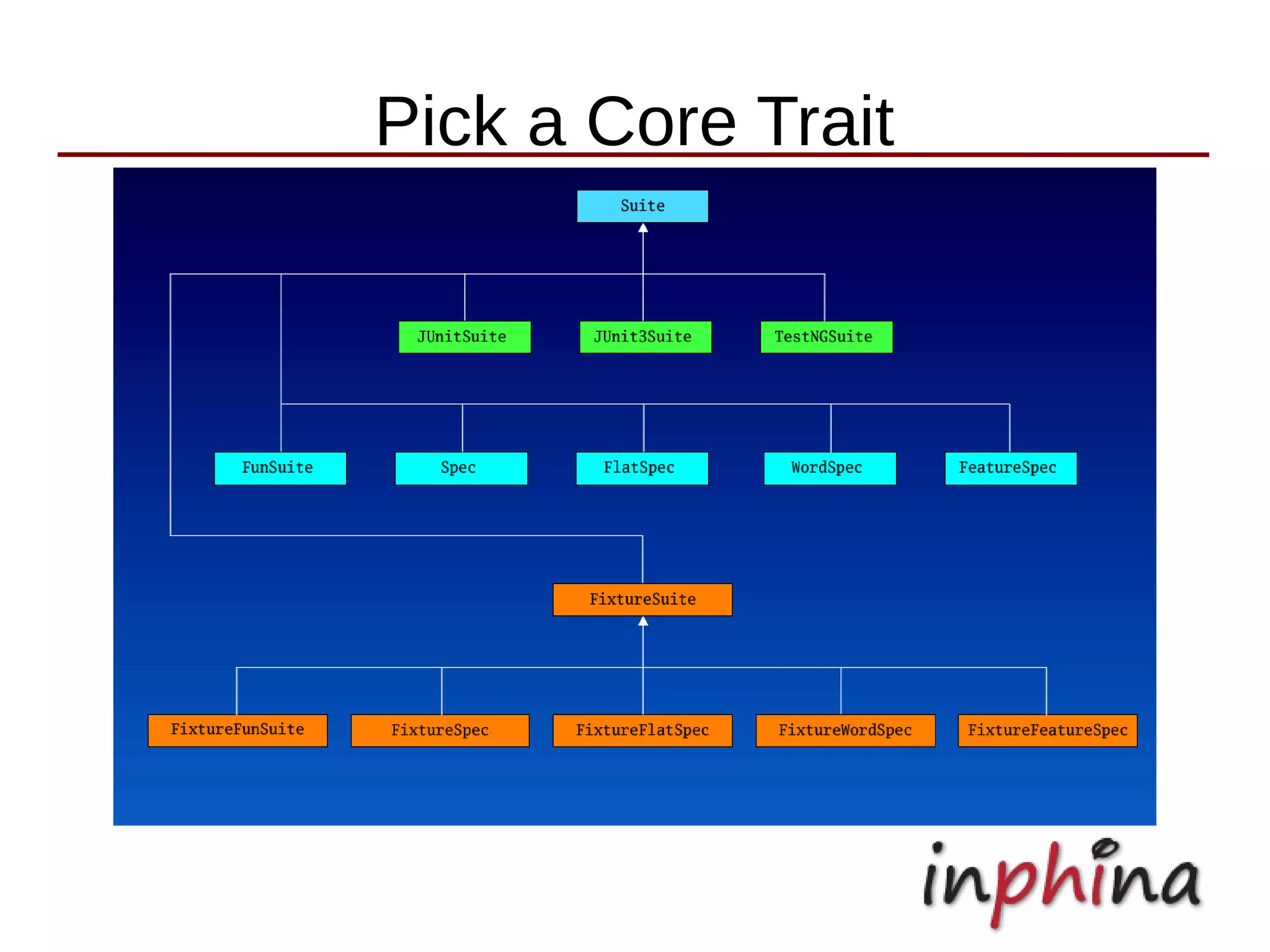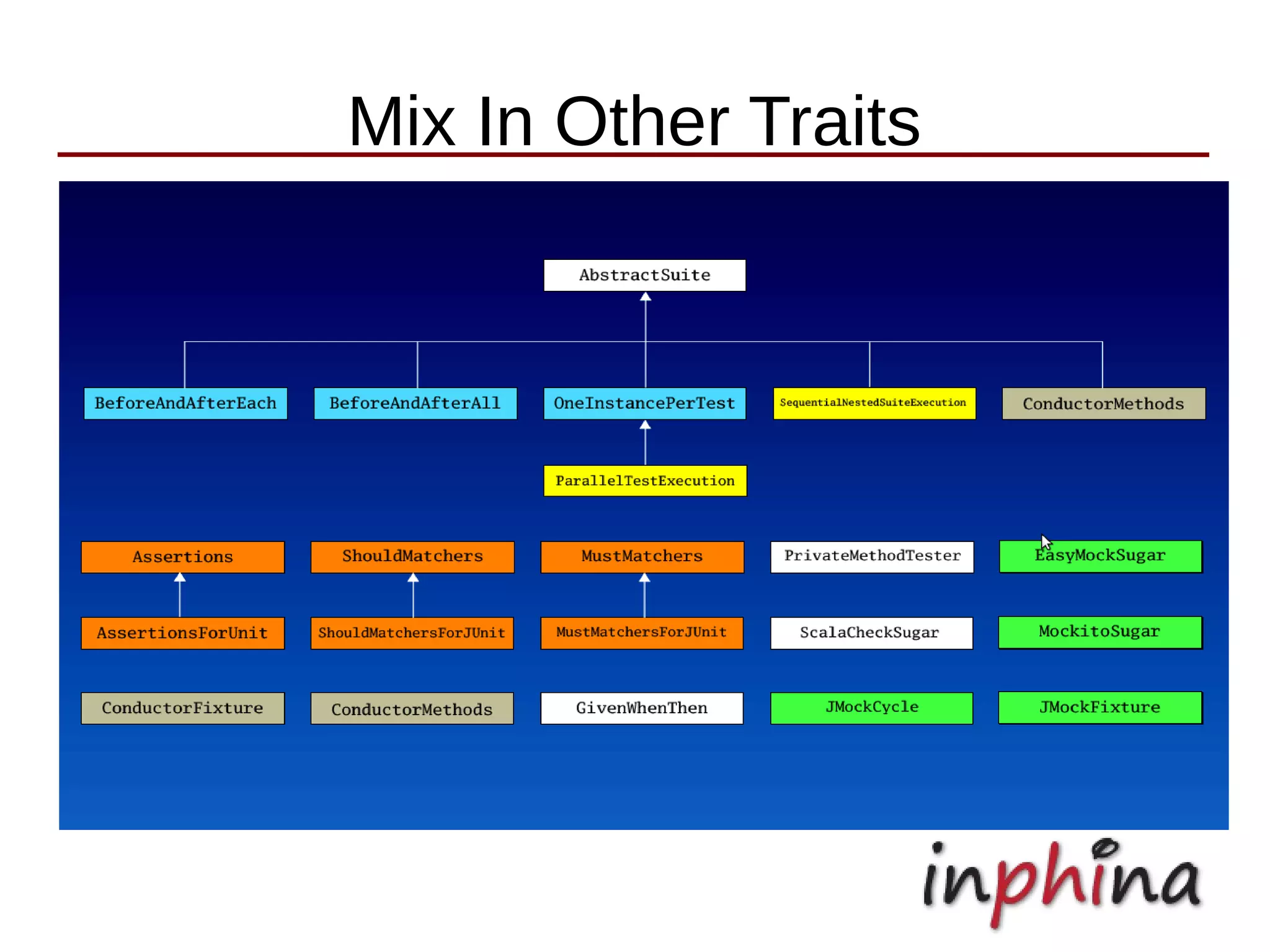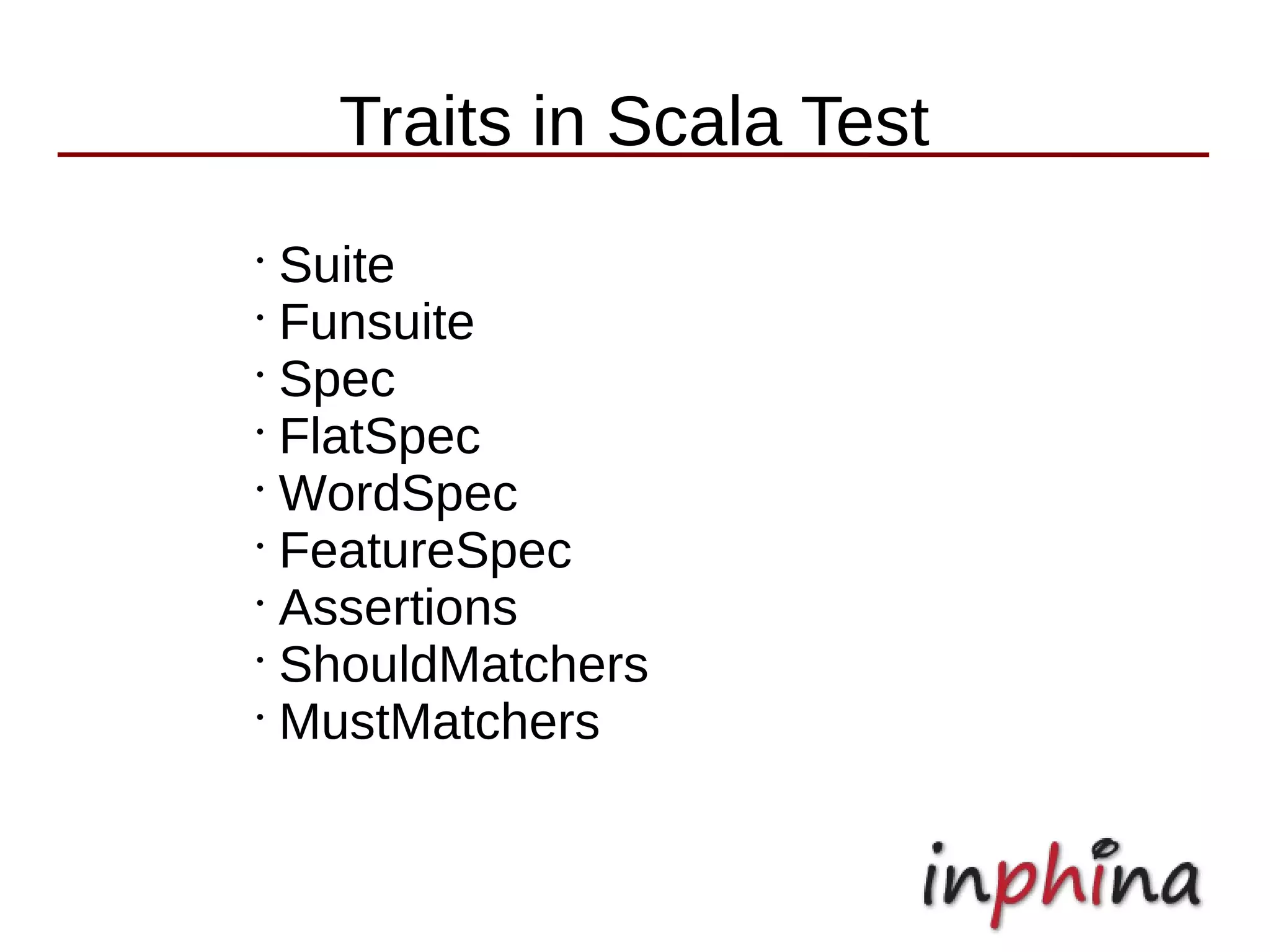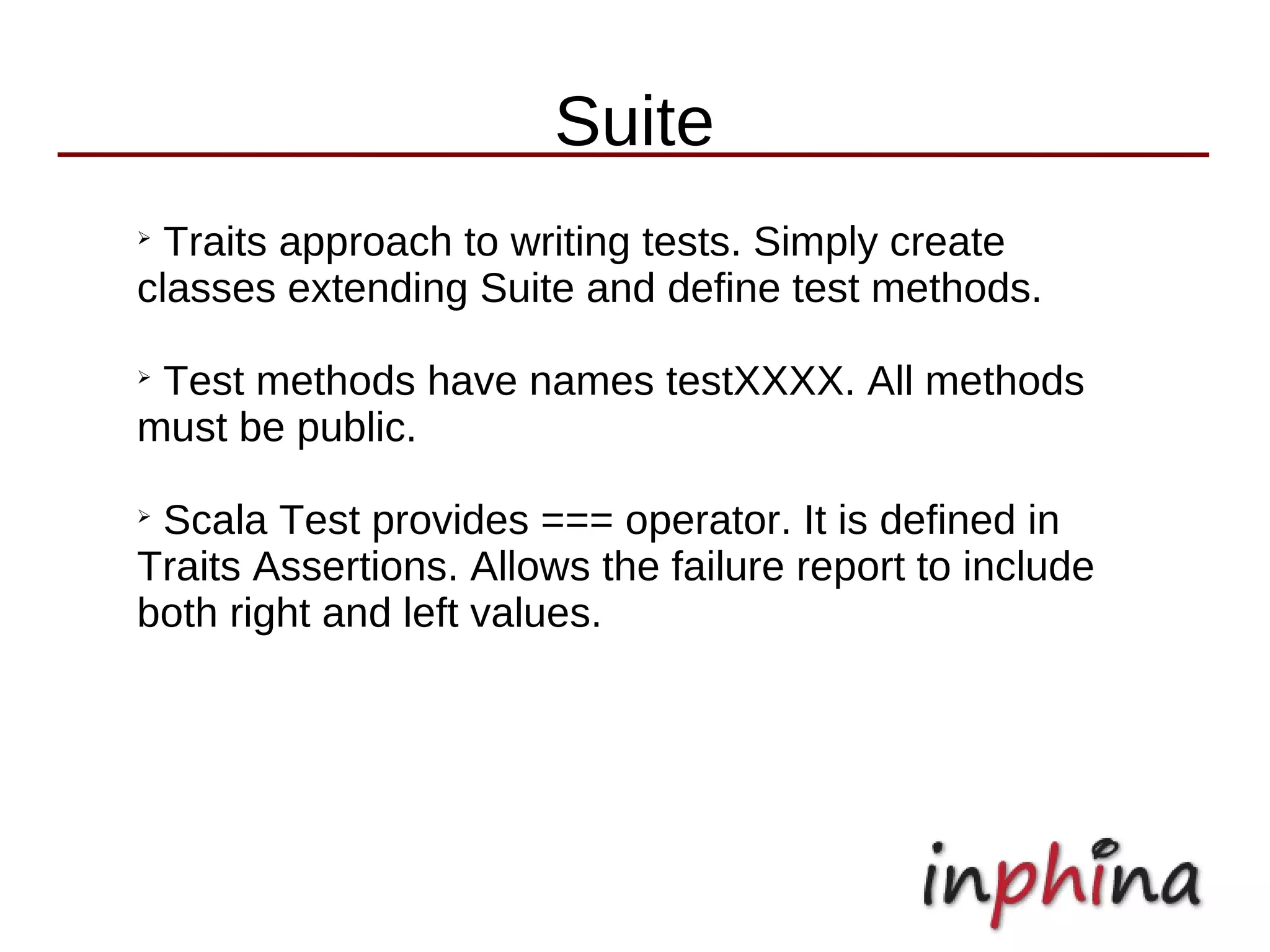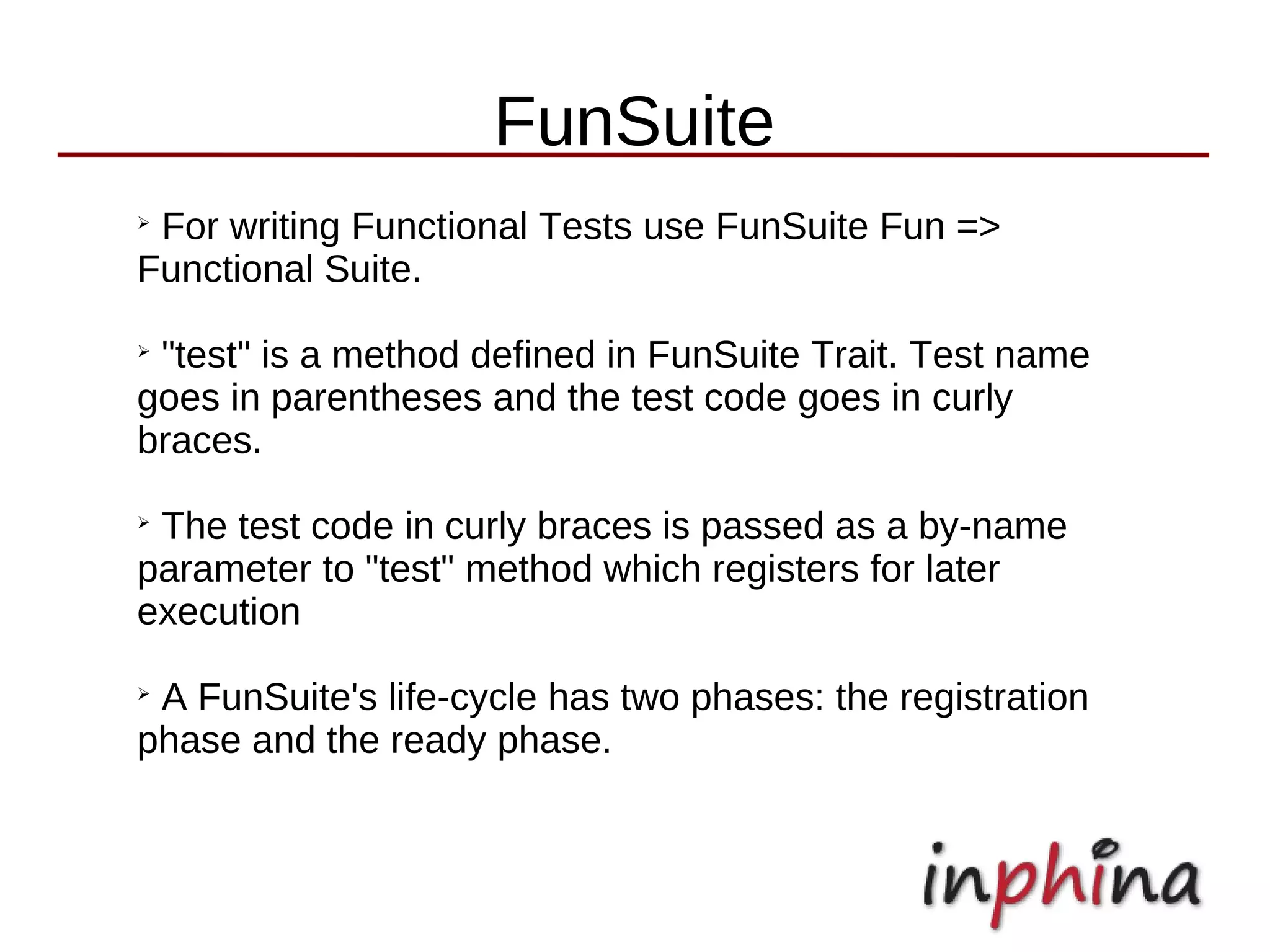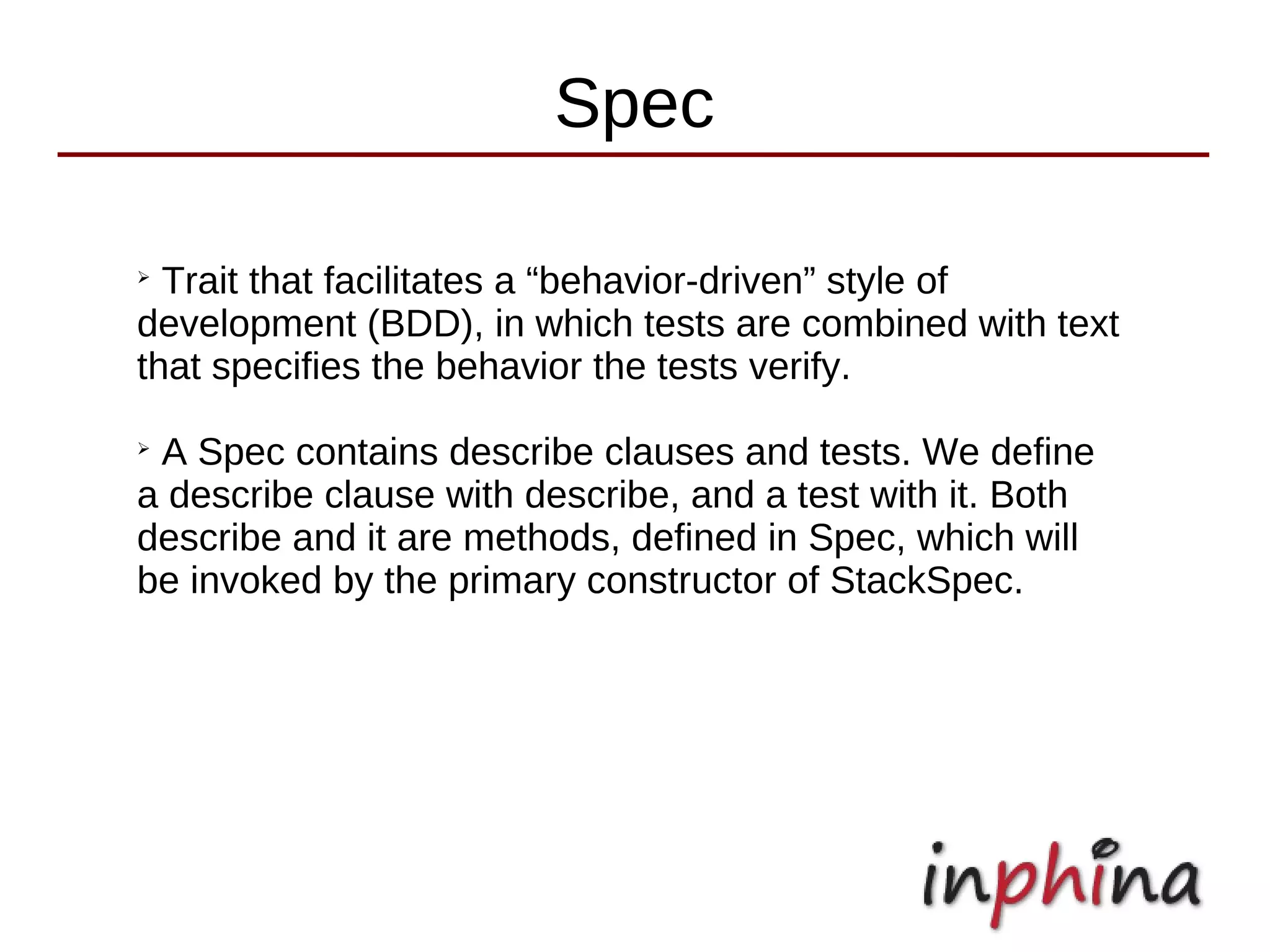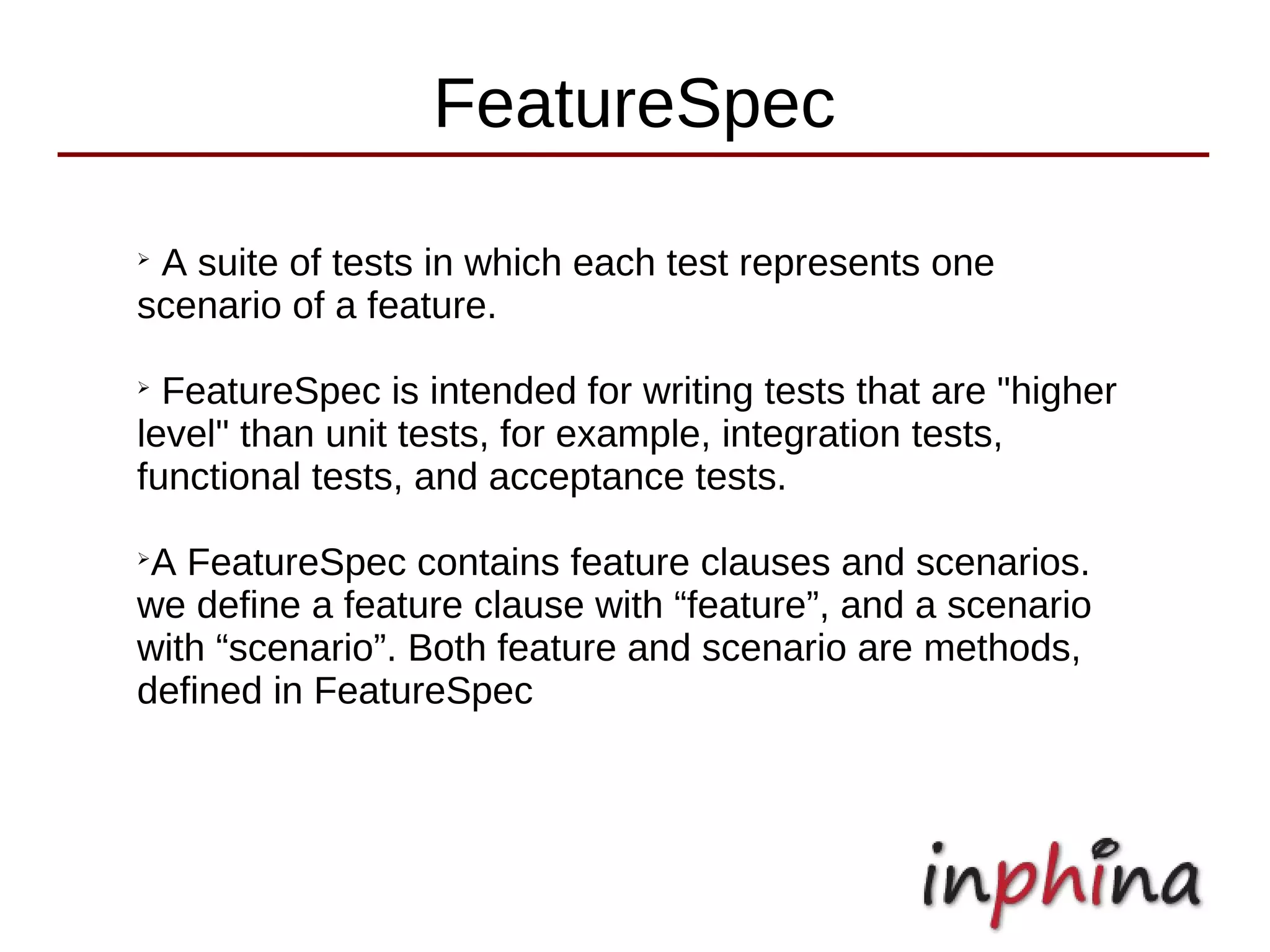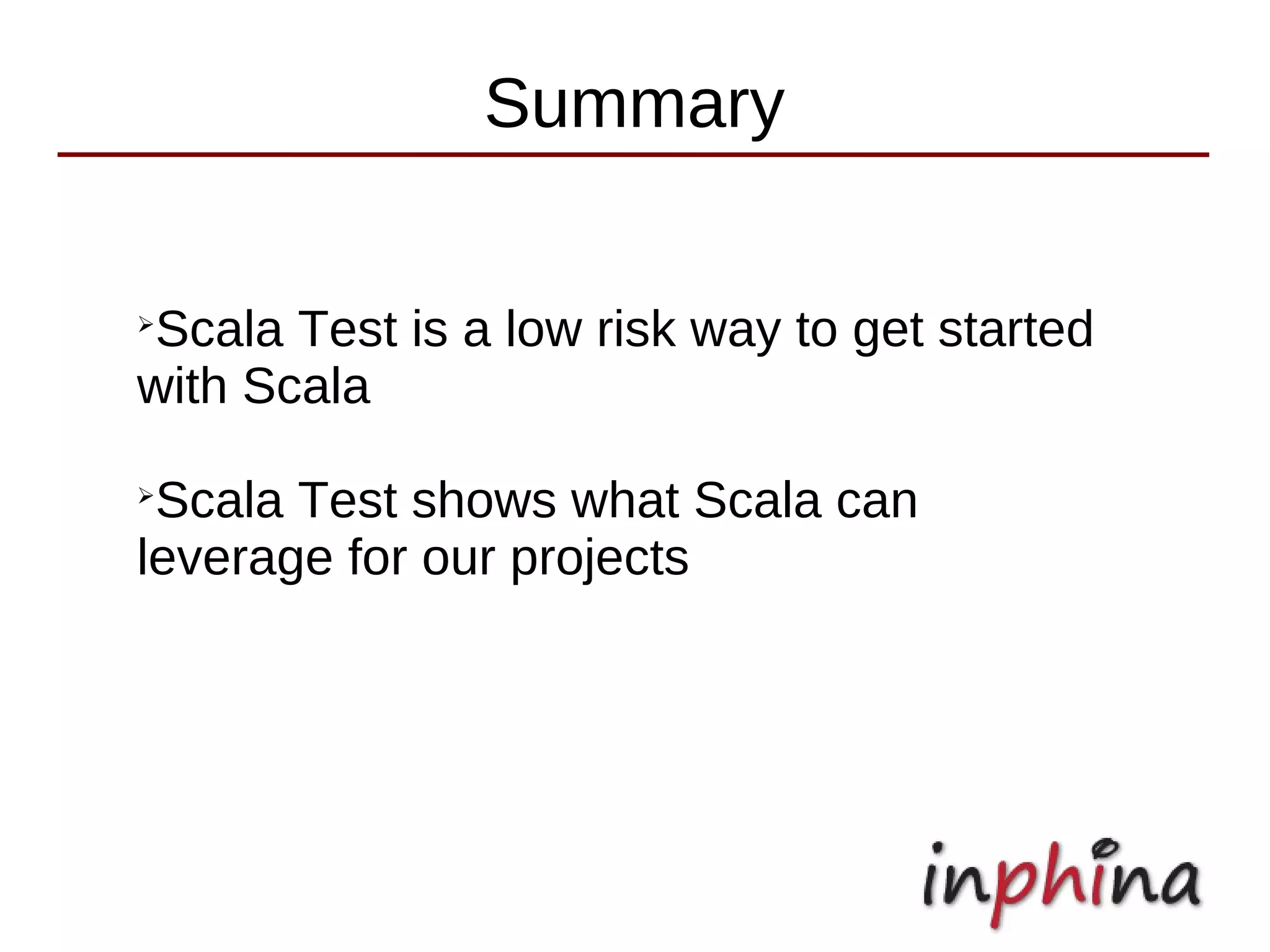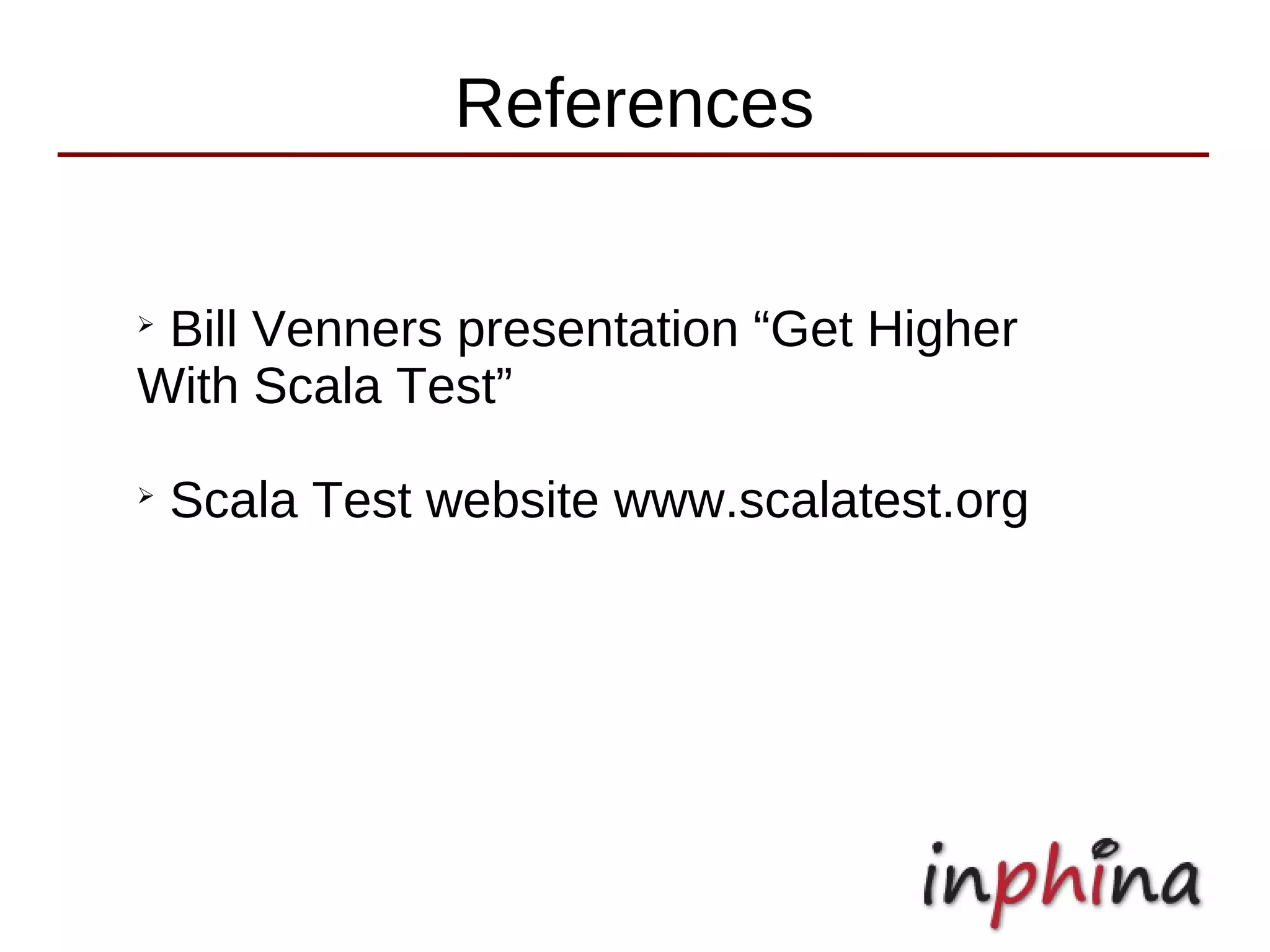Scala Test allows testing of Scala and Java code. It integrates with tools like JUnit, TestNG, Ant, and Maven. Scala Test is customizable and uses traits to define different styles of testing, including Suite for defining test classes and methods, FunSuite for functional tests, Spec for behavior-driven development, and FeatureSpec for integration and acceptance tests.

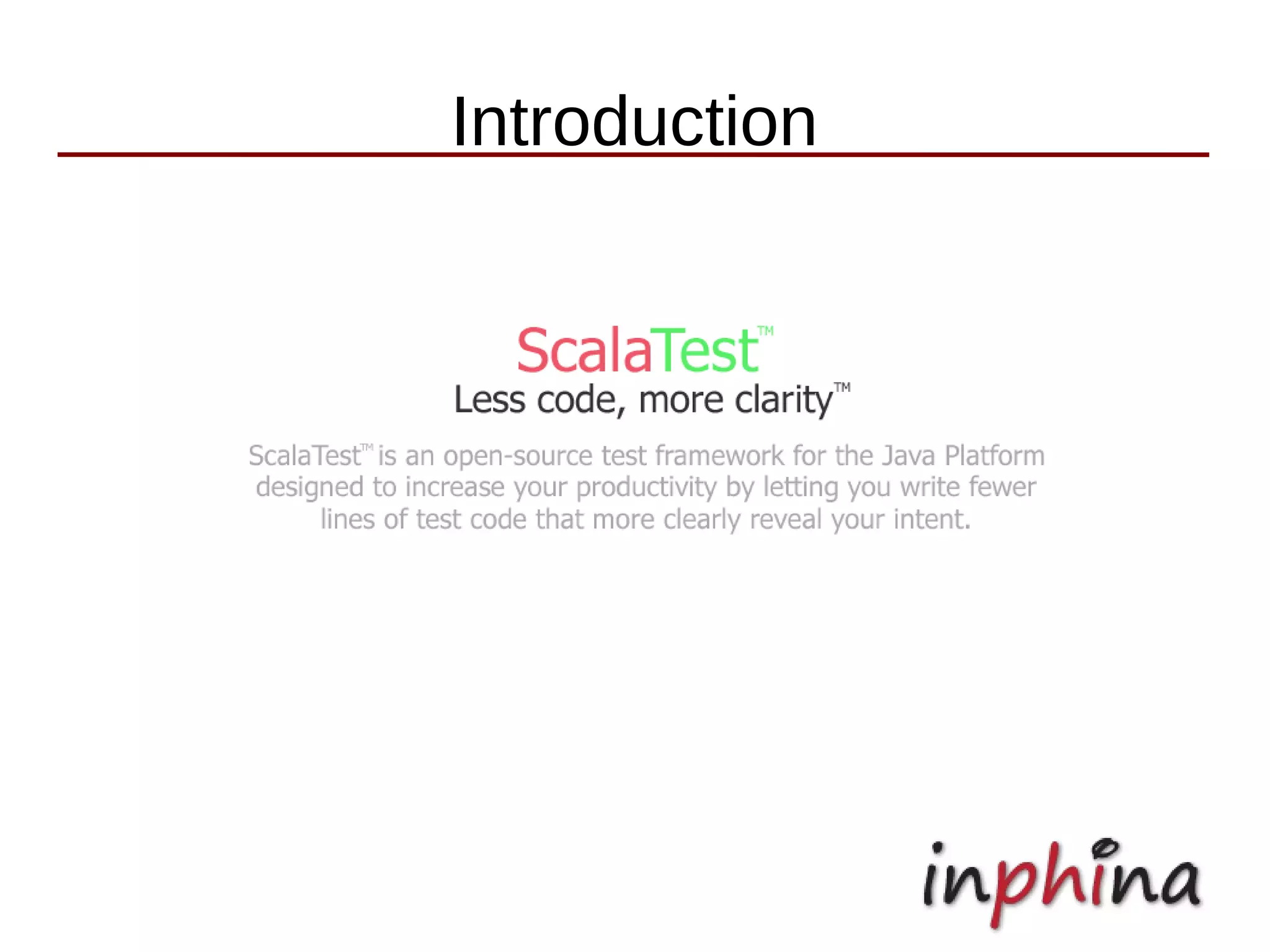
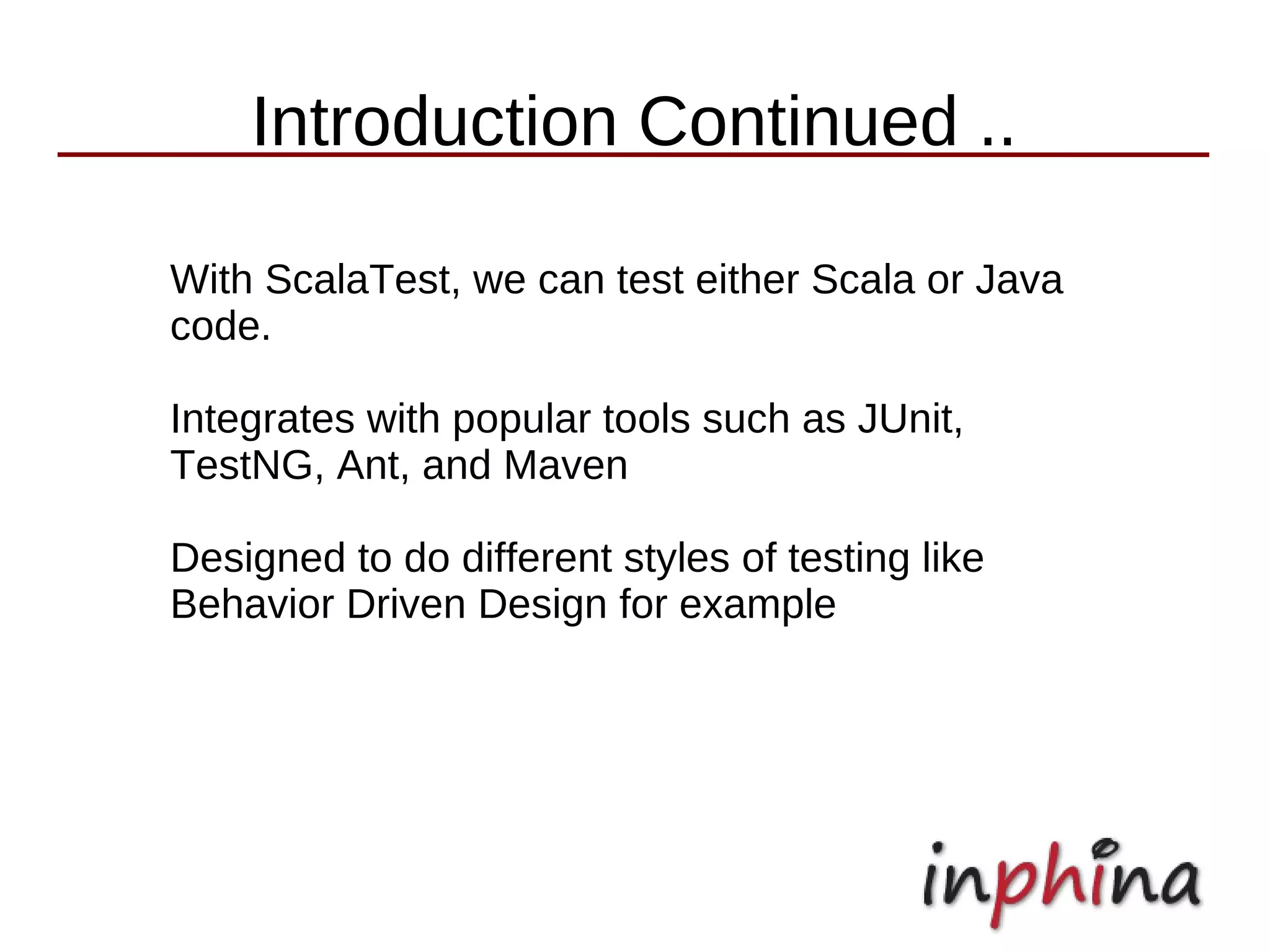
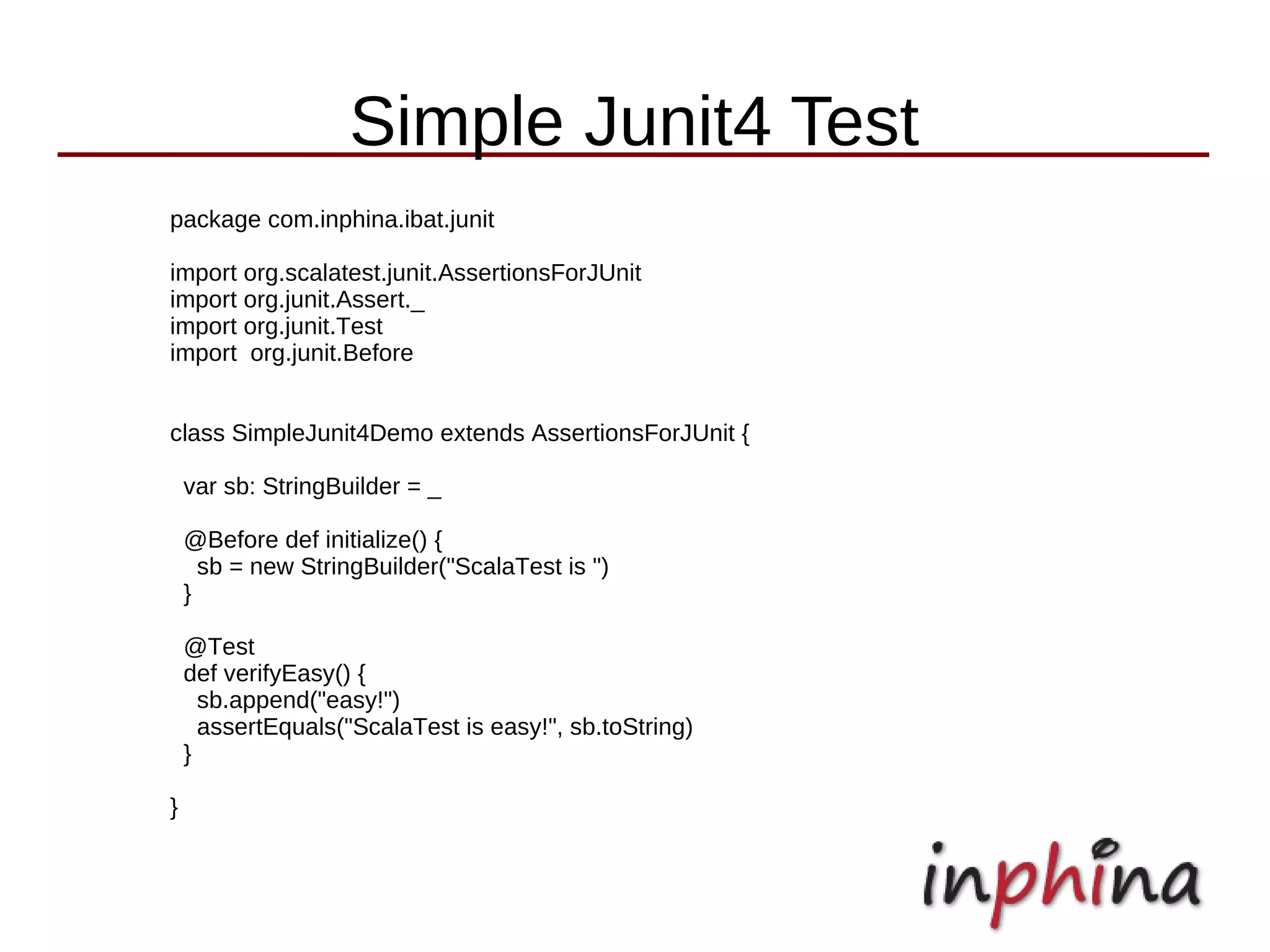
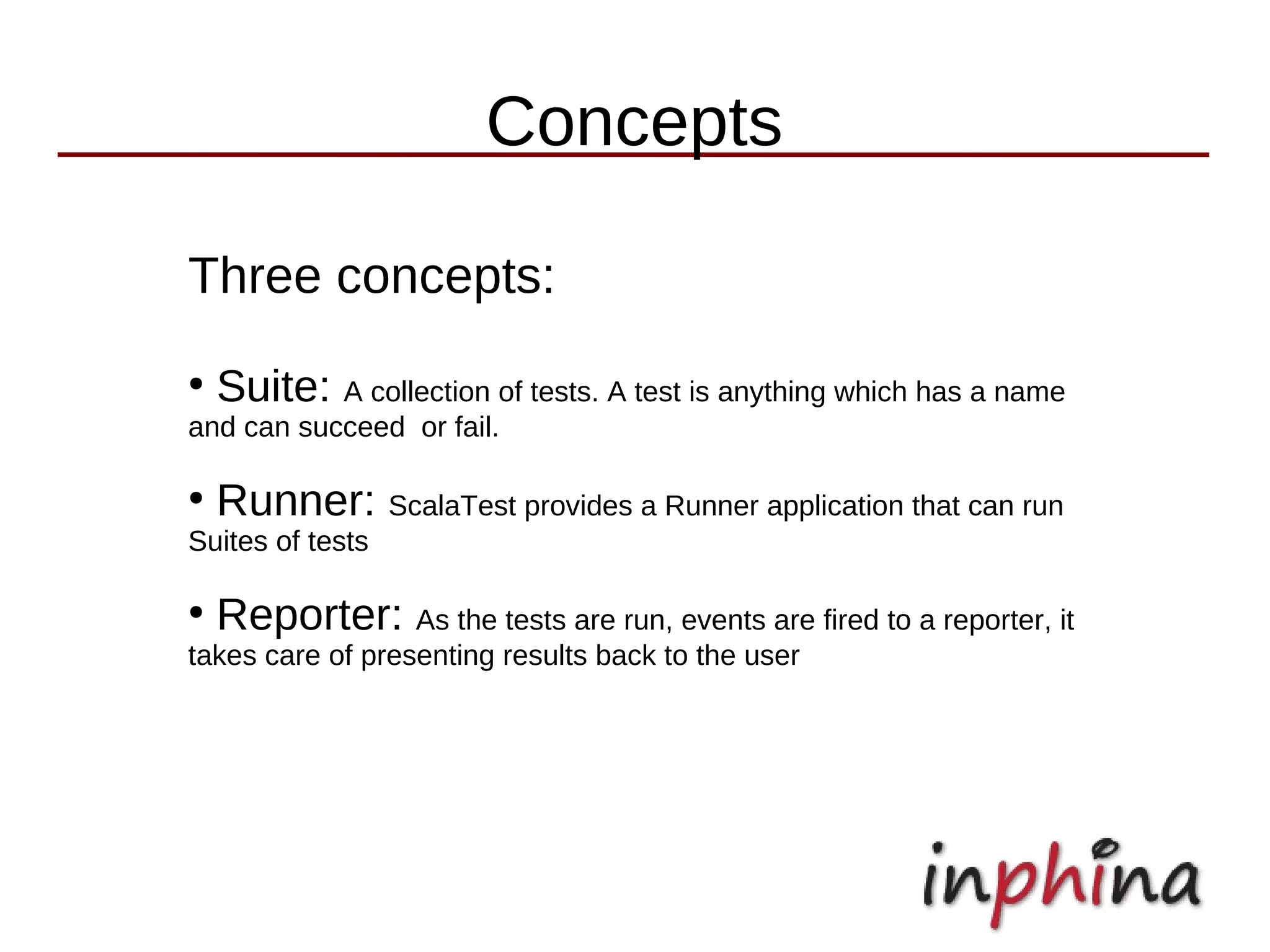
![Scala Test Is Customizable
Suite
<<trait>>
def expectedTestCount(Filter): Int
def testNames: Set[String]
def tags: Map[String, Set[String]]
def nestedSuites: List[Suite]
def run(Option[String], Reporter, ...)
def runNestedSuites(Reporter, ...)
def runTests(Option[String], Reporter, ...)
def runTest(Reporter, ...)
def withFixture(NoArgTest)](https://image.slidesharecdn.com/scala-test-110610042636-phpapp01/75/Scala-test-6-2048.jpg)
![Under The Hood
When you run a Test in Scala Test you basically invoke
run(Option[String], Reporter, .. ) on Suite Object.
●
It then calls runNestedSuites(Reporter, ..)
●
And it calls runTests(Option[String], Reporter, ..)
runNestedSuites(Reporter, ..) :
●
invokes nestedSuites() : List[Suite] to get a List of nested Suites
runTests(Option[String], Reporter, ..) will call def testNames:
Set[String] to get a Set of test names it needs to run. For each test
name it calls runTest(Reporter, ...) It wraps the test code as a
Function Object with a name and passes it to withFixture(NoArgTest)
which actually runs the test.](https://image.slidesharecdn.com/scala-test-110610042636-phpapp01/75/Scala-test-7-2048.jpg)
